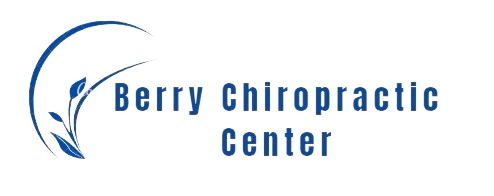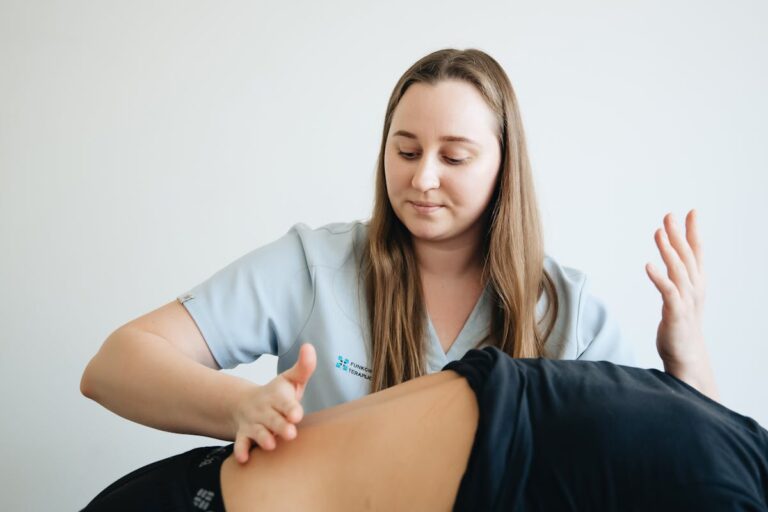As we journey through the intricacies of the human body from a chiropractor’s standpoint, we uncover a diverse range of natural remedies for neck pain. These remedies, which comprise a balanced amalgamation of chiropractic adjustments, ergonomic alterations, and nutritional enhancements, offer a promising pathway to alleviating discomfort. But how exactly does aligning the spine aid in reducing neck pain? What role does proper posture and workstation ergonomics play in this equation? Do anti-inflammatory foods and hydration really have a considerable impact? Join us as we unravel these questions and explore the potential of these natural methods in pain management.
Understanding Neck Pain
While it may seem ubiquitous, understanding neck pain is essential to identifying appropriate remedies. The causes of neck pain can be multifaceted, often originating from physical strain, stress, or underlying health conditions such as osteoarthritis. This discomfort can manifest in various ways, with symptoms of neck pain ranging from a dull ache to sharp, incapacitating stabs. It may also contribute to headaches, shoulder pain, or a feeling of tightness in the neck. Understanding the intricacies of neck pain requires a thorough and holistic approach. This necessitates not only a thorough scientific understanding but also a keen appreciation for the interconnectedness of the human body. By identifying the causes and symptoms of neck pain, we can work towards finding effective and natural remedies.
The Role of Posture
A paramount factor in the prevalence of neck pain is posture. Poor posture, particularly during prolonged sedentary activities, can contribute considerably to the development of musculoskeletal discomfort. The key to alleviating this issue is posture awareness. By consciously maintaining positions that promote natural spinal alignment, individuals can prevent the progression of neck pain and promote overall wellness.
Ergonomic adjustments in daily life, such as optimizing workstations and incorporating regular movement breaks, can greatly assist in maintaining proper posture. This holistic approach to neck pain management not only addresses the physical dimension but also encourages a proactive attitude towards personal health. As a result, understanding the role of posture is critical in the journey towards pain relief and improved quality of life.
Chiropractic Adjustments for Relief
Despite the commonality of neck pain, many individuals are unaware of the potential benefits that chiropractic adjustments can offer. This holistic, scientific approach can help alleviate discomfort and stimulate the body’s natural healing processes. The chiropractic benefits range from improved mobility to reduced pain and inflammation. Chiropractors use specific adjustment techniques, tailored to each patient’s unique situation, to correct subluxations, or misalignments in the spine. These techniques can include gentle pressure, controlled force, or high-velocity thrusts, all aimed at the best positioning of the spine. Regular chiropractic adjustments can greatly enhance the quality of life, promote better sleep, and support overall health. It’s a promising avenue for those seeking natural, non-invasive relief from neck pain.
Beneficial Neck Stretches
To manage neck pain naturally, incorporating beneficial neck stretches is essential. We will explore effective neck stretching techniques, outlining precautions to guarantee safety and efficacy. Establishing a regular stretching routine can provide significant relief, a topic to which we will now turn our attention.
Effective Neck Stretching Techniques
Though not always immediately recognized, regularly practicing effective neck stretching techniques can greatly alleviate chronic neck pain. These techniques help in managing neural tension and correcting muscle imbalances, which are often the root cause of persistent neck discomfort. Gentle neck stretches can relax tense muscles, enhance flexibility, and promote better posture, consequently reducing the strain on the neck. Specific techniques include lateral flexion stretches and neck rotation exercises, both of which can help in re-establishing the natural range of motion. These stretches, when done consistently, can effectively interrupt the cycle of pain and tension. However, it is essential to perform these stretches correctly to avoid exacerbating existing conditions, and to consult with a healthcare provider for personalized advice.
Precautions During Neck Stretches
How can one perform neck stretches safely and effectively? The answer requires a holistic understanding of safety measures and stretch duration. It is vital to initiate stretching exercises only when the neck muscles are warm. Cold muscles are less flexible, increasing the risk of injury. Gradual stretching, without forcing the neck beyond its comfortable range, helps prevent muscle strain. Paying attention to body signals is essential; any sharp pain should prompt immediate cessation of the exercise. Stretch duration is equally important. Ideally, each stretch should be held for 15-30 seconds, repeated 3-5 times per set. This duration can provide ideal benefits without overstretching the muscles. Remember, safety and effectiveness in neck stretching are interdependent.
Stretching Routine for Relief
Understanding the precautions during neck stretches paves the way for a discussion on a beneficial stretching routine for relief. Integrating specific massage techniques into your routine can provide immediate relief and promote long-term healing. For instance, gentle circular motions applied on the strained muscles can enhance blood circulation and alleviate tension. Additionally, incorporating ergonomic adjustments into your daily activities is essential. This can range from adjusting your computer screen to eye level, to adopting a posture that promotes spinal alignment.
An effective stretching routine should be holistic, combining scientific knowledge with natural techniques. This approach, encompassing regular stretches, massage techniques, and ergonomic adjustments, can greatly alleviate neck pain, providing the much-needed relief and improving your overall quality of life.
Yoga Poses for Neck Health
Incorporating yoga into one’s daily routine can be an effective means to manage and alleviate neck pain. Yoga benefits include improved flexibility, enhanced circulation, and increased strength, all of which can contribute to a healthier neck. Specific poses, such as the Cobra, Bridge, and Child’s pose, target the neck area, promoting alignment and relieving tension.
Moreover, the practice of mindful breathing, inherent to yoga, fosters relaxation, reduces stress, and enhances overall well-being. This deep, controlled breathing can help to ease muscle stiffness and discomfort in the neck.
Conclusively, yoga offers a holistic approach to neck health, combining physical postures and mindful breathing. When practiced regularly, it can serve as a potent, natural remedy for neck pain.
Nutritional Changes to Consider
Exploring the domain of nutritional adjustments can offer significant relief for neck pain. Adopting a diet rich in anti-inflammatory foods, for instance, can help mitigate discomfort by reducing inflammation in the body. It is, consequently, essential to examine how these dietary changes can contribute to holistic neck pain management and overall well-being.
Dietary Adjustments for Relief
Have you ever contemplated the role your diet plays in managing neck pain? It’s crucial to understand that certain dietary adjustments can provide significant relief from chronic discomfort. Integrating herbal supplements and foods rich in omega fatty acids into your diet is one holistic approach to reflect on. Herbal supplements, such as turmeric and ginger, have properties that can manage inflammation and alleviate pain naturally. Omega fatty acids, found abundantly in fish like salmon, are renowned for their anti-inflammatory benefits. Simultaneously, reducing intake of processed foods can help lower systemic inflammation. These nutritional changes, when combined with other chiropractic treatments, can contribute to an all-encompassing strategy to manage and relieve neck pain.
Anti-Inflammatory Foods Benefits
While it may seem surprising, incorporating anti-inflammatory foods into your daily regimen can significantly improve neck pain. These foods work by reducing inflammation at a cellular level, thereby relieving pain and stiffness. Importantly, anti-inflammatory spices such as turmeric, ginger, and cinnamon can be easily included in your meals. They contain compounds like curcumin and gingerol, which have been scientifically proven to exhibit powerful anti-inflammatory properties.
Additionally, omega-3 fatty acids, found in sources such as fish, flaxseeds, and walnuts, are renowned for their capability to reduce inflammation. This nutrient not only alleviates neck pain but also promotes overall well-being. Consequently, optimizing your diet with these elements can be a holistic, effective, and natural way to manage and possibly eliminate neck pain.

The Impact of Hydration
A significant proportion of individuals often overlook the profound influence of hydration on neck pain. Hydration benefits are multifaceted, promoting ideal cellular function, reducing inflammation and facilitating waste removal – all vital factors in managing neck discomfort. Water constitutes the majority of our bodily fluids, playing a pivotal role in the health of our intervertebral discs. These discs, made mainly of water, act as shock absorbers between our vertebrae. When dehydrated, these discs can become compromised, resulting in heightened pain and stiffness. Additionally, dehydration effects can manifest as muscle spasms and cramps, exacerbating neck discomfort. Consequently, maintaining ideal hydration is not only essential for overall health but is a practical, natural remedy for alleviating neck pain.
Exploring Alternative Therapies
Could there be more natural, non-pharmacological approaches to managing neck pain? As chiropractors, we believe in the power of holistic healing, encouraging patients to explore alternative therapies such as acupuncture and massage therapy. Acupuncture, a practice rooted in traditional Chinese medicine, offers numerous benefits. It aids in the reduction of inflammation, improvement of circulation, and alleviation of pain by stimulating specific points on the body. Similarly, massage therapy can provide significant relief. It targets and relaxes tense muscles, improving flexibility and mobility. Both modalities aim to restore the body’s natural balance, providing a non-invasive and drug-free option for neck pain management. In the domain of holistic healing, these therapies demonstrate exceptional potential for natural pain mitigation.
Frequently Asked Questions
Can Chiropractic Adjustments Cause Any Immediate Side Effects?
Yes, chiropractic adjustments can cause immediate side effects. Patient experiences can vary but may include temporary discomfort, fatigue, or headache. These adjustment effects are generally mild and resolve within a short period.
How Often Should I Perform These Recommended Yoga Poses?
The frequency of yoga sessions depends on individual needs. However, as a general guideline, performing the recommended poses daily for 15-30 minutes aids in managing neck pain. Always prioritize form and comfort over frequency and duration.
Are These Nutritional Changes Recommended for Everyone or Just for Neck Pain Sufferers?
The recommended nutritional changes can be beneficial to everyone due to their inherent nutritional benefits. However, those with specific dietary restrictions should consult a healthcare professional before making any significant alterations to their diet.
Whats the Best Sleeping Position to Avoid Neck Pain?
The ideal sleeping position to mitigate neck pain is typically on your back, using a supportive pillow. This posture aligns the spine, while selecting the right pillow type enhances comfort, reducing strain on neck muscles.
Are There Any Specific Over-The-Counter Products Recommended for Neck Pain Relief?
From a chiropractic viewpoint, over-the-counter products like topical analgesics or non-steroidal anti-inflammatory drugs (NSAIDs) may provide temporary neck pain relief. However, long-term use is not recommended without consulting a healthcare professional.






